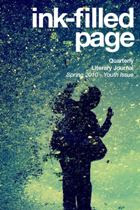For casual communications, like email or short notes to friends, I am tempted to fill my writing with ellipses marks. Less committed than a period, more lingering than a comma, the little series of dots generously link one (often incomplete) idea to the next as I imagine a certain nuance filling the void. Beware: unless your book is an unearthed collection of ancient text preserved in disparate pieces of clay tablet, many of which may still be missing--the Epic of Gilgamesh, for instance--this willy-nilly application is not suitable for formal composition. The truth is, despite the whimsy I associate with them, ellipses have a fairly regimented function.
As end of sentence punctuation, ellipses do effectively convey a trailing-off in thought, particularly in dialogue. Primarily, though, ellipses represent an author's choice to eliminate words, phrases, lines, even whole paragraphs when quoting text in his or her writing. That said, a well-quoted passage will maintain the full meaning of the original text.
For those writers who are ellipses-happy, inserting four or even five dots in your ellipses, the Chicago Manual of Style thoroughly outlines three methods of employing this punctuation. Here's a preview:
(1) three-dot method: the most common in both general writing and scholarly work. Indicates an omission within or between sentences.
(2) three-or-four-dot method: for use in poetry and scholarly writing (not legal work or textual commentary). Three dots function as in #1. Four dots mark the omission of one or more sentences and the first dot is considered a true period. Other punctuation (than what was written in the original) may follow three dots but never four.
(3) the rigorous method: A variation of method #2 that "allows maximum fidelity to the original material", found in legal work, textual commentary, and frequent references. Refinements pertain to bracketing capitalized letters, placement of the first dot and placement of ellipses points.
In-house style sheets should indicate a preference for ellipses use, including spacing and number of points. The Copyeditor's Handbook reminds editors working onscreen to use the special ellipses character for proper formatting (as opposed to typing in a series of three or four periods).
For examples, and a lot more detail, see section 11.51-11.71 in the Chicago Manual of Style, online at www.chicagomanualofstyle.org/home.html.
Monday, June 29, 2009
Subscribe to:
Post Comments (Atom)





Hannah, you are the cutest. Thank you for enlightening us!
ReplyDelete